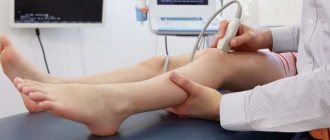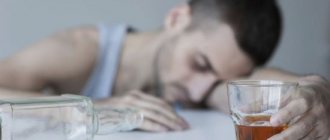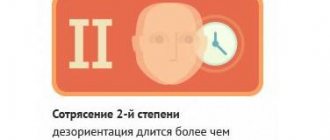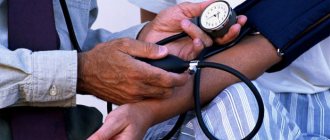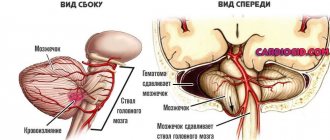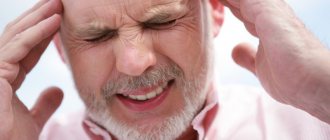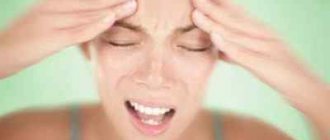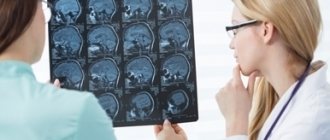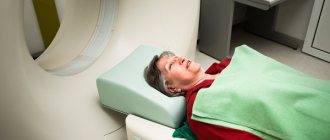Having fallen from a bicycle or slipped on ice, only a few of us seek qualified help. Most people refuse to visit the doctor, and in vain. The fact is that even a minimal impact with the head is fraught with the development of such an unpleasant condition as a concussion.
The illness may be short-term, or it may be that its symptoms accompany a person for a month. This disease is dangerous and requires immediate treatment. Ignoring the signs of a concussion is fraught with critical consequences.
Goals and objectives of treatment
To guide further research, the primary goal is to determine the primary goals and objectives of treatment for concussion.
An important goal is a thorough examination of the victim by a doctor, as well as the exclusion of additional injuries that could affect recovery. A neurologist can easily diagnose a concussion.
To avoid additional injuries, such as cracks, fractures, displacement of the cervical vertebrae, it is necessary to conduct a diagnosis.
Most often, X-rays and electroencephalography are done.
But there are cases when neither the first nor the second method can produce results. Then the doctor recommends a magnetic resonance imaging scan.
How to avoid head injury from a fall
There is a saying: “If I knew where to fall, I would send straws.” And we can fall not only in ice, but also on a banana peel, as in the famous film, and sometimes someone just knocks you down, this often happens in sports. And, what’s offensive, often when we fall we hit our heads and can easily get a concussion of varying severity.
Despite the lightning speed of the fall, you can accomplish a lot during the “flight”.
To prevent this from happening, during classes in sports sections, coaches teach how to fall correctly. I didn’t attend sports clubs, but when I taught my children and grandchildren to skate, I always explained how to behave correctly when falling, so as not to hit their heads.
When you start to fall, you will still feel this moment, try to group yourself quickly: clench your hands into a fist so as not to knock out your fingers and be sure to fall on your side. If you succeed, you can roll over, which will soften the blow of the fall. But this method is suitable when you are in the gym or you are a man. But in an ordinary situation, for example, on the street, you are unlikely to tumble, even if you are also a woman and you are wearing a dress.
Therefore, remember this rule: group yourself and fall on your side.

First aid for concussion
You should not self-medicate for a concussion, as this carries a great health risk.
You should not decide how to treat a concussion on your own, even if in your opinion the injury is mild and does not threaten your health, still wait for the ambulance to arrive , since not all concussions show a full clinical picture immediately.
First of all , you need to remove things from the person’s chest and neck that may make it difficult for him to breathe.
Before the arrival of specialists, in the absence of a fracture of the base of the skull or spine, the victim should be placed horizontally on a flat surface and the head should be raised slightly.
If a person does not regain consciousness for more than 10 minutes, then it is necessary to ease his breathing .
This may be artificial respiration or closed cardiac massage. If it is impossible to carry out the mouth-to-mouth technique, you need to do mouth-to-nose artificial respiration.
It is necessary to blow in air sharply and with pressure so that the chest enlarges noticeably. The number of acts per minute is about 12. If the respiratory tract is blocked, the victim is placed on his right side and his head is turned towards the ground, while throwing his head back a little.
It is necessary to apply sterile bandages or tourniquets if there is bleeding or other open wounds due to the concussion.
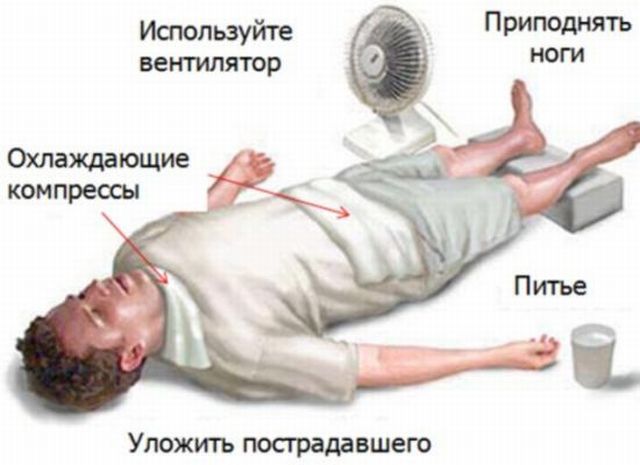
Determination of severity
Based on the patient’s condition and clinical symptoms, there are 3 degrees of concussion.
- Mild concussion. The person is conscious, but there may be headache, nausea in the first 20 minutes after injury, and lethargy. After 30 minutes, your health returns to normal. It is possible to raise body temperature to +38°C.
- Moderate concussion. The patient experiences spatial disorientation, headache, nausea, and dizziness. These symptoms last for more than 20 minutes and there is memory loss for some time.
- Severe concussion. This degree is described by the obligatory loss of consciousness for a short time. The patient may forget what happened before the injury. Headache, nausea, dizziness, fatigue and sleep disturbances plague a person for up to two weeks after receiving a severe concussion.
What to do if you have a concussion
Treatment after a concussion should begin with adherence to an appropriate regimen.
Mode
The following regimen is followed for concussion. The victim is taken to the emergency department of the hospital, where a primary diagnosis is established. Next, bed rest is observed for 1 to 5 days.
If there are no complications of any kind, the person is discharged, but outpatient treatment is prescribed.
As a rule, no dieting is required. It is only recommended to exclude chocolate, salty foods, strong coffee, fried and fatty foods from your diet for a while.
Drug treatment
Treatment of a concussion with drugs is aimed primarily at normalizing and restoring brain function , as well as normal blood circulation.
This is very important, since it is the blood that supplies the human brain with oxygen. How exactly is a concussion treated?
are selected that can increase vascular tone and ensure their trophism . Elderly people are prescribed medications to prevent sclerosis of nerve tissue.
In order to normalize a person’s condition, doctors prescribe a number of medications that help get rid of insomnia, dizziness, headaches and the like.
Atrophy of the cerebral cortex or gradual death of brain cells can lead to complete helplessness of the patient.
An incomprehensible and unpleasant state of anxiety can cause a vegetative crisis - you can learn the symptoms and treatment of the syndrome from our article.
Physiotherapy
If pain in the back of the head persists for a long time, then physical therapy is prescribed - another standard of treatment for a concussion.
One effective method is isometrics. This is a set of exercises in which muscle fibers contract, developing tension, but do not stretch.
All this has a positive effect on improving muscle structures.
Physiotherapy
Therapeutic gymnastics is also very useful, but it is prescribed individually, depending on the severity of the concussion. To begin with, do exercises for the respiratory system and muscles of the limbs. This is considered the first period.
The second stage is considered active because it requires dynamic movements. Exercises begin to be done while in the starting position, sitting or lying down. Move your head to the sides and lift your torso.
Exercises that are aimed at restoring coordination and balance are especially important at this stage.
It is recommended to perform exercises on attentiveness, accuracy, and memorization step by step. A lot of walking is required, since one of the problems that arise after an injury is gait disturbance.
The third period is called the recovery period, since all training is aimed at restoring the functions of the organ that was damaged. Gymnastics and various sports equipment are added to the exercise program.
In the exercises performed, the emphasis is on accuracy of execution.
ethnoscience
Not everyone considers it necessary and correct to seek help from specialists in their field, so they experiment at home with traditional medicine.
But also, not everyone knows that traditional methods help cure a concussion only if it is used together with a traditional course of treatment.
One of the popular recipes is a tincture of creeping thyme herb. All you need is 1 tbsp. this herb and 2 tbsp. water. Pour thyme into water, brew it, and then leave for an hour.
The resulting mixture must be filtered. It is recommended to take half a glass before meals.
Prevention lasts no more than six months, and then you need to look at how you feel. Thanks to this tincture, blood flow in the brain improves.
Signs and symptoms of pathology
This injury is common and ranks 1st on the list of traumatic brain injuries. Even a minor injury to the head can lead to a concussion.
A person with a concussion may have the following symptoms:
- Confusion for a short time.
- At rest, the patient feels dizzy. When changing body position, dizziness intensifies. The reason for this phenomenon is a violation of blood circulation in the human vestibulation apparatus.
- Headache.
- General weakness.
- Noise in ears.
- Nausea, possible vomiting.
- Slow speech.
- Lethargy.
- Double vision. When trying to read, there is severe pain in the eyes.
- Noise intolerance.
- Painful reaction of the eyes to lighting.
- Impaired coordination of movements. The easiest way to determine a concussion is a test: the patient, standing with his eyes closed, needs to touch the tip of his nose with his index finger.
Prognosis for cure
If you follow the treatment regimen prescribed by the attending physician, the concussion will go away almost unnoticed and your previous ability to work will certainly be restored.
Some residual symptoms may bother the victim for a couple of months , but everything goes away. A certain percentage of affected people still experience moderate brain disability. This prolongs the recovery and treatment period for a concussion.
In some cases, when the injury is severe or has complications, and treatment recommendations are not followed, vegetative-vascular dystonia and epilepsy develop, especially if the person is partial to alcohol.
Consequences and rehabilitation
It is impossible to predict complications after a concussion. After a concussion, a person may experience residual symptoms for a long time. The consequences of a head injury can be different:
- recurrent headaches;
- Bad mood;
- increased excitability;
- aggressive state;
- sleep disturbance;
- unreasonable fears;
- intolerance to harsh sounds;
- intolerance to tobacco smoke and alcohol;
- memory impairment;
- absent-mindedness.
To minimize the negative consequences of injury, the victim must follow the following recommendations:
- Sleep at least 8 hours a day.
- Ventilate the room frequently.
- Maintain the temperature at home no more than +20°C.
- Avoid coffee, fried and fatty foods.
- Quit alcohol and smoking.
- Do physical therapy.
- Spend more time outdoors.
- Get a massage.
- Avoid stressful situations.
- Reduce mental and physical stress.
- Take a course of acupuncture.
- Use medications only as prescribed by a doctor.
- Visit the pool.
The treatment will be effective and short-lived if the patient follows all the doctor’s prescriptions and also follows the regimen. Failure to follow medical recommendations may result in health problems.
Diagnostics
Typically, a neurologist can suspect a concussion even based on two or three characteristic signs, but to prescribe the correct treatment, a diagnosis of the brain is required:
- Craniography – it is carried out to exclude fractures of the cranial bones.
- MRI or computed tomography.
- Ophthalmological examination of the vessels of the fundus.
- Spinal tap.
- Ultrasound examination of the vessels of the head.
- Electroencephalogram.
Consequences of a mild concussion
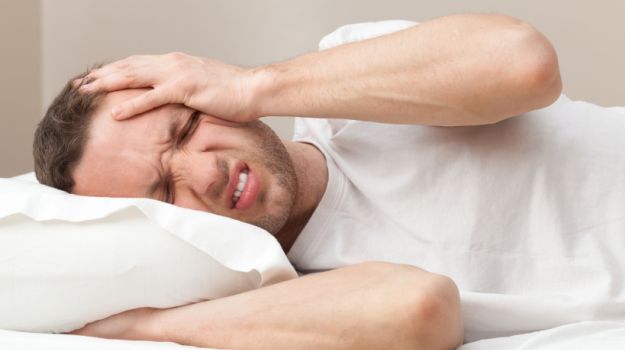
If full treatment is not carried out, the victim may be accompanied by regular depressive states, causeless anxiety, and systematic headaches. He may suffer from decreased concentration and complain of memory loss.
With the slightest improvement in well-being, people can immediately begin their daily duties, any activity, or return to work. It is important to understand that even a mild concussion can manifest itself later, but in the form of various physical ailments.
The consequences are fraught with sleep disturbances and complicated psycho-emotional states. Vision often decreases, there is a decrease in mental activity and many other negative disorders, accompanied by chronic irritability.
Now you know what to do in case of a mild concussion, how to help yourself or another victim.
Recovery
In moderate and severe cases, the patient is sent to a hospital, where he undergoes treatment under supervision. A diagnosis is carried out that allows you to see the consequences of the injury or exclude concomitant diseases and injuries (fracture, hematoma).
Medical care for mild forms is usually not required, but for some time the patient is recommended to rest completely - if the victim endures the recovery process on his legs, this can lead to serious consequences, including the development of an episyndrome. Especially with prolonged loss of consciousness and concomitant pathology - for example, a depressed fracture of the bones of the cranial vault.
It is recommended to stay in bed for two weeks, stop reading books, watching movies, and working on the computer . You are allowed to listen to music (not through headphones). Your doctor may prescribe medications that support brain function. It is necessary to monitor the patient's condition so as not to miss the development of complications.

Care for brain injury should be provided in accordance with the degree of damage to the nervous system after the injury. Mild cases do not always require medical intervention, but moderate and severe cases must be treated in a hospital. In some cases, it is necessary to provide emergency first aid - cardiac massage and artificial respiration to the victim.
